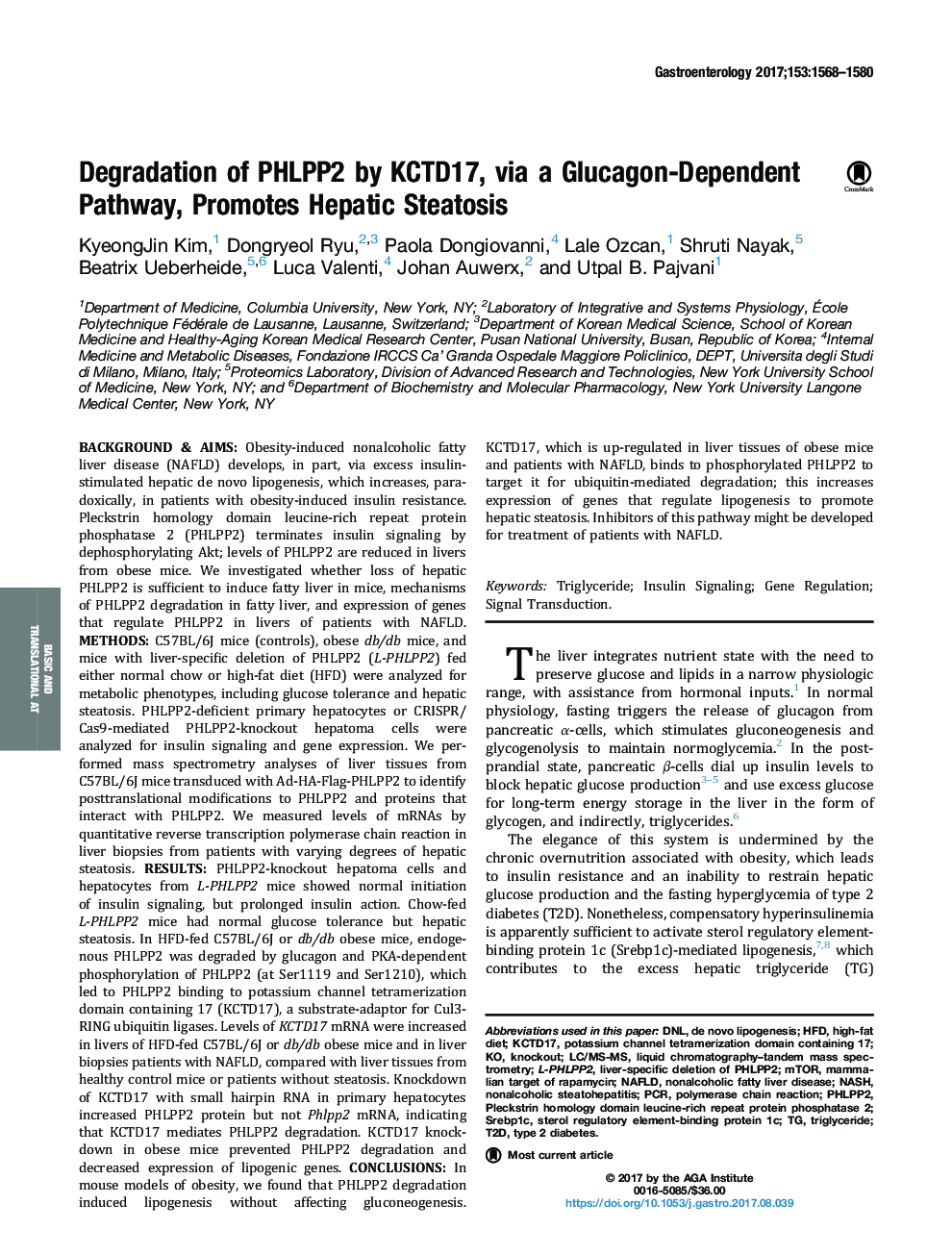| Article ID | Journal | Published Year | Pages | File Type |
|---|---|---|---|---|
| 8727377 | Gastroenterology | 2017 | 23 Pages |
Abstract
In mouse models of obesity, we found that PHLPP2 degradation induced lipogenesis without affecting gluconeogenesis. KCTD17, which is up-regulated in liver tissues of obese mice and patients with NAFLD, binds to phosphorylated PHLPP2 to target it for ubiquitin-mediated degradation; this increases expression of genes that regulate lipogenesis to promote hepatic steatosis. Inhibitors of this pathway might be developed for treatment of patients with NAFLD.
Keywords
LC/MS-MSPHLPP2SREBP1cDNLT2DmTORNAFLDHFDde novo lipogenesisnonalcoholic steatohepatitisNonalcoholic fatty liver diseasetriglycerideGene regulationType 2 diabeteshigh-fat dietInsulin signalingknockoutNash Signal transductionmammalian target of rapamycinpolymerase chain reactionPCRsterol regulatory element-binding protein 1cliquid chromatography–tandem mass spectrometry
Related Topics
Health Sciences
Medicine and Dentistry
Gastroenterology
Authors
KyeongJin Kim, Dongryeol Ryu, Paola Dongiovanni, Lale Ozcan, Shruti Nayak, Beatrix Ueberheide, Luca Valenti, Johan Auwerx, Utpal B. Pajvani,
